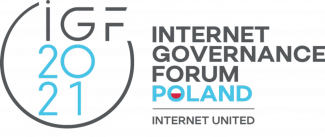Cutting carbon in a digital world – myths and facts
10 Dec 2021 14:00h - 15:00h
Event report
This session discussed initiatives to decarbonise the information and communications technology (ICT) sector; strategies to decarbonise the supply and value chain, specifically focusing on the need for improved data transparency; and better methodologies for estimating carbon emissions and carbon footprint. It touched upon opportunities to decarbonise other industries by deploying mobile technology and ICT.The panellists started the discussion by talking about the carbon footprint of the ICT sector and initiatives to mitigate emissions and drive decarbonisation.
Mr George Kamiya (Digital/Energy Analyst, International Energy Agency) addressed the general perception that energy demands and related CO2 emissions of the ICT industry have grown quickly. He pointed out that the number of internet users has grown ten times over the past two decades, while global internet traffic grew about 2,000 times, without causing a major increase in energy consumption (topped at 4% increase). Even though the increase is not as high as predicted, Kamiya stated that there is a need for strong climate policies, investments in the research and development of effective technologies for the future, and applying ICTs to enable emission reductions across other sectors.
Ms Pernilla Bergmark, (Principal Researcher, ICT Sustainability Impacts, Ericsson) started by mentioning the complexities of forecasting CO2 emissions in the ICT sector and the need for transparency related to real-world data. Bergmark explained the existing work of the International Telecommunication Union (ITU) to achieve decarbonisation of the ICT sector, such as the Guidance for ICT Companies Setting Science-based Targets, and the Net-zero Standard L.1471. Looking at the cross-sectoral approaches, Bergmark pointed out that the Climate Action Pathways of the UN Framework Convention on Climate Change (UNFCCC) include energy, transport, water and ocean industries, as well as light industries where ICT and mobile can be a part of the decarbonisation efforts.
From the point of view of the mobile industry, Mr Steven Moore (Head, Climate Action, GSMA) stated that there is an agreement from the whole sector to transition to net zero by 2050, and that they are working with their members to better understand their climate impacts. He specified that a third of the members have committed to becoming net zero by 2050, and some committing to the transition by 2040.
Ms Savannah Goodman (Technical Program Manager, Energy Development, Data and Software Lead, Google) spoke about Google’s 24/7 carbon-free energy programme, set to eliminate their electricity emissions on every grid they operate on every single hour of the year. The programme sets out that Google will only use carbon-free electricity from renewable sources, and this commitment extends to their energy procurement from third parties as well.
Kamiya agreed with Bergmark on the lack of data and a lack of an established methodology for measuring carbon emissions of the ICT sector.
Moving to the topic of opportunities of the ICT sector to help other sectors to decarbonise by implementing technologies, Bergmark noted that the top priority is to work together with other sectors and to prioritise solutions that are addressing the climate crisis. She emphasised the importance of having well-evaluated cases quantifying the impacts of ICTs on lowering emissions, which are currently lacking due to incoherence and insufficient transparency of relevant data sets and methodologies.
Moore spoke about the enablement effects of mobile technologies in reducing carbon emissions. The mobile industry itself has the capacity to exponentially lower its carbon emission and can contribute to other sectors such as the energy sector, transportation (e-cars), remote work, and smart manufacturing.
In regard to the potential of ICTs to exponentially multiply net-zero efforts, Goodman highlighted the necessity to engage with utilities and grid operators in policy discussions and standard-setting in order to fully transition to renewable energy sources and accelerate the retirement of fossil fuel capacities.
As a member of the audience, Mr Michael Oghia (Director of External Relations, Sustainable Digital Infrastructure Alliance) asked about the willingness of the ICT industry to transparently share data on carbon emissions. He also wanted to know how Google evaluates whether the electricity purchased from third parties comes from renewable sources.
Goodman explained that with the power purchase agreements, it comes down to the definition of regions for electricity deliveries, and that the 24/7 programme sets out what Google considers a reasonable boundary to consider whether the electricity comes from renewable sources. She stated that Google is increasingly involved in advocacy and global standard-setting to transfer to renewable energy sources.
Adding to Goodman’s remarks, Bergmark stated that there is a new work item within ITU’s agenda to set up a global database on emissions of the ICT sector, which would also add to transparency. Moore added that the GSMA is preparing an update to the industry on climate action in 2022 and is looking to aggregate data and provide more transparency.
The last topic the panellists addressed was the impact of supply and value chains, concluding the session with confirming the need to address ICT sustainability in a holistic way, not just focusing on energy use.
By Pavlina Ittelson
Session in numbers and graphs




Automated summary
Diplo’s AI Lab experiments with automated summaries generated from the IGF sessions. They will complement our traditional reporting. Please let us know if you would like to learn more about this experiment at ai@diplomacy.edu. The automated summary of this session can be found at this link.Related topics
Related event

Internet Governance Forum (IGF) 2021
6 Dec 2021 10:00h - 10 Dec 2021 18:00h
Katowice, Poland and Online
